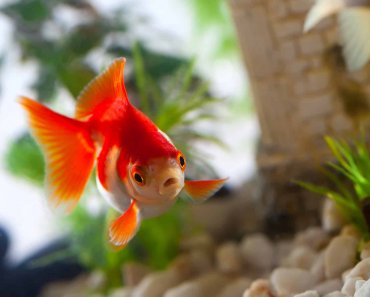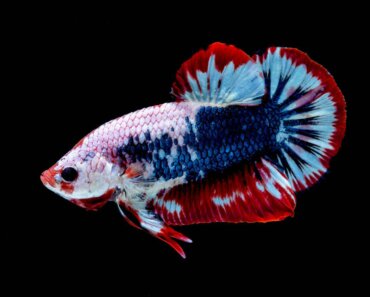When it comes to managing pain in dogs and cats, these alternative modalities have a lot to offer. Consider trying one of these options before reaching for the pain meds.
Animals experience pain just like we do. But because dogs and cats are so stoic, most people don’t realize their animals are suffering. In nature, animals that show signs of pain or weakness are targets for prey, so they have adapted to hide their pain in order to survive. Learning how to recognize pain in your dog or cat is the first step, along with getting the problem properly diagnosed by your veterinarian. And there are many ways to manage pain besides medication. This article explores some alternative modalities for pain management in dogs and cats.
Recognizing pain in your companion animal
In dogs and cats, pain presents as a change in behavior or mobility (see sidebar). For instance, a dog experiencing pain from arthritis may not want to perform daily activities, such as going for long walks, or may have a hard time getting in and out of the car. Cats in pain may hesitate or avoid jumping onto higher surfaces, may hide more often, or experience a decreased appetite.
If you notice these signs in your own dog or cat, take him to the veterinarian for a checkup. Pain can arise from many different conditions and it’s important to find out which one is bothering your own animal so he can be properly treated.
Pain management – 11 alternative solutions
Fortunately, there are many ways you and your animal’s healthcare team can help manage pain and extend his quality of life.
1. Physical rehabilitation
Physical therapy is a service often used in human medicine to help patients recover from surgery or restore tissue function after an injury. Likewise, many modalities used in animal physical rehabilitation help reduce pain and inflammation to improve an animal’s comfort.
2. Laser therapy
Laser therapy, also referred to as low-level light therapy or photobiomodulation, uses light to stimulate specific cells to reduce pain associated with inflammation. The laser can also help regenerate damaged tissue by restoring function. Laser is often used on animals experiencing arthritis or soft tissue injuries, or recovering from surgical procedures. Animals with neurologic diseases, such as intervertebral disc disease (IVDD) or degenerative myelopathy, benefit from laser as it helps regenerate nerve function.
 3. Thermal therapy
3. Thermal therapy
Thermal therapies such as heat and cryotherapy are often used to improve circulation or decrease inflammation and swelling. Ice is added after surgical procedures to help reduce pain and swelling, whereas heat can be applied to sore muscles or stiff joints to provide circulation to the tissues and joints.
4. Therapeutic ultrasound
Therapeutic ultrasound uses low energy sound waves to warm up the tissue. It improves flexibility and promotes healing while decreasing pain and inflammation. It’s often used for animals with soft tissue trauma, such as muscle and tendon strains or sprains.
5. Extracorporeal shockwave therapy
This device uses high energy sound waves to stimulate the tissue, causing a physiologic response that leads to endorphin release for pain management, and promotes tissue healing. Animals that benefit from shockwave therapy include those suffering from arthritis, muscle and tendon injuries, or bone fractures that are not healing as expected. There are many different types of shockwave therapy, some of which may require light sedation due to the loud sound and intensity of the shocks.
6. Electrotherapy
Also known as E-Stim or TENS (Transcutaneous Electrical Nerve Stimulation), electrotherapy uses an electrical current that is applied to a painful area to inhibit the sensory response to pain. Electrical stimulation can help in cases involving arthritis, post-surgical recovery, or soft tissue injuries or trauma.
7. Pulsed electromagnetic field therapy
Pulsed electromagnetic field therapy uses low-frequency electromagnetic fields to reduce inflammation and decrease pain in the body. FDA-approved devices can be prescribed for use at home. Animals that benefit from this treatment are those with arthritis, wounds, soft tissue trauma, neurologic conditions, and post-surgical management.
 8. Acupuncture
8. Acupuncture
Acupuncture uses small needles inserted into specific points on the body, causing a physiologic response. Acupuncture releases the body’s natural endorphins, which help control pain. It also stimulates nerves, which is beneficial for animals experiencing neurologic dysfunction like IVDD or degenerative myelopathy. Arthritis and soft tissue injuries also benefit from acupuncture.
9. Therapeutic exercise
Therapeutic exercise is used in animal rehabilitation to help strengthen weakened muscles that may be associated with an injury or post-operative recovery. Arthritis causes pain in the joints leading to weakness in the muscles. Therapeutic exercises help improve strength and mobility in arthritic animals, and those recovering from surgery or injury.
10. Hydrotherapy
Hydrotherapy, such as swimming in warm circulating water, or walking on an underwater treadmill, provides buoyancy while reducing pain on injured joints. The warm water causes vasodilation and increases blood flow to the tissue, which helps decrease pain in the muscles and joints. The hydrostatic pressure of the water provides body awareness that is helpful in older dogs, or those suffering from neurologic disease. The resistance of the water also improves strength as the animal swims or walks against the water.
11. Massage
Last but not least, massage and manual therapies alleviate taut muscles and increase circulation to the tissues. Massage brings blood flow to the tissue, providing oxygen and nutrients to the area. It can reduce pain by decreasing muscle spasms and improving the flexibility of joints. Massage can also decrease stress and anxiety, which can exaggerate pain. Most animals – and their humans – would benefit from a massage!
Ask your veterinarian if he or she offers any of these pain-relieving modalities, or seek out a veterinary rehabilitation center in your area. It is important to understand that although these modalities have therapeutic effects for managing pain and discomfort, other medical interventions may be added to your dog or cat’s regimen to provide the best pain relief and improve overall comfort. It is also important to know that not all animals are candidates for every modality, and that a consultation with a trained veterinary professional is necessary to discuss the best options for your own dog or cat.




























